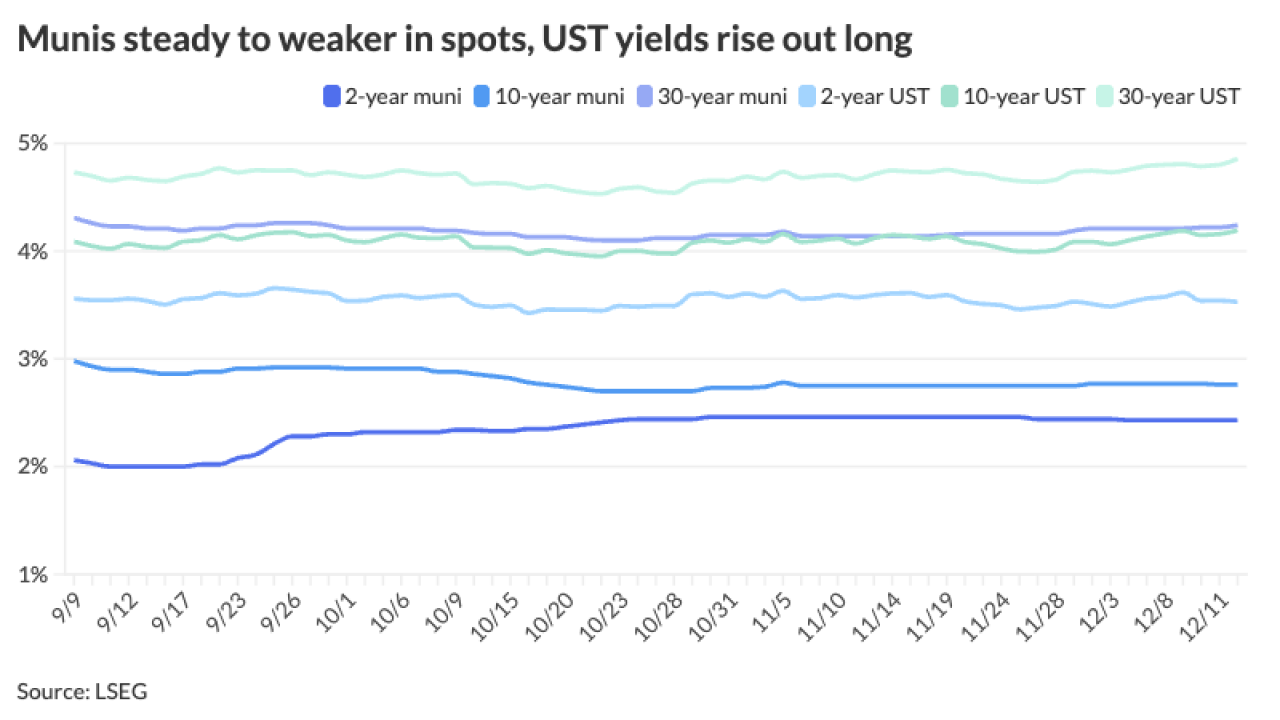
Climate-driven wildfire risks are reflected in the borrowing costs of some school district bonds, according to an academic paper presented at the Brookings Institute's annual
Their
The study looked at 150,013 school district bonds sold in the primary market during a 20-year period ending in 2021 in eleven fire-prone states spread across the country. It also evaluated 406,621 trades in the secondary market from 2005 to 2020.
The results "indicate that anticipated future wildfire risk changes are already having economically significant impacts on financial markets, municipal borrowing costs and vulnerable communities," the researchers wrote.
Woongchan Jeon, one of the authors, presented the paper, "Pricing Climate Risks: Evidence from Wildfires and Municipal Bonds," Tuesday at the Brookings conference.
Jeon, a researcher in the energy and climate economics group at ETH Zurich, co-wrote the paper with Lint Barrage, associate professor and chair of the ETH Zurich group and Kieran James Walsh, a senior assistant at ETH Zurich.
The researchers chose school districts for the sample, because they are economically significant, borne out by the $450 billion in outstanding debt the sector had in 2022.
Schools also can't be easily re-located out of fire-prone areas, like companies can, making them more vulnerable to fire risk, Jeon said.
"We need to think about adaptation bonds to help these school districts prepare for future wildfire risks," he said.

Wildfires are increasingly imposing significant economic costs on the U.S. economy with direct losses and fiscal implications for municipalities, Jeon said.
In 2018, direct costs from wildfires reached $30 billion, accounting for 26% of total climate-related disaster damages, Jeon said. The January 2025 wildfires in Los Angeles are projected to incur insured losses of $75 billion, potentially the highest in U.S. history, he said.
Climate change is expected to compound wildfire risks in many U.S. regions, he said.
The research analyzed municipal bonds spreads, defined by the difference between a bond's yield to maturity and a maturity-matched risk-free benchmark yield.
The effects on bond pricing are more pronounced in areas with higher minority populations and greater reliance on local revenue, Jeon said.
Erika Smull, a senior research analyst at Breckenridge Capital Advisors, who weighed in on the study, said she worked on a research paper in 2022 that studied pricing climate risk in the muni market, and found no "meaningful evidence of a risk premium."
But, Smull added that paper looked at the entire country and studied all climate risk, not just wildfires. That's not to say there isn't a risk premium. Although 2025 was not included in the author's study, she believes "this year will be a turning point in pricing climate risk into the market."
The possibility that the Federal Emergency Management Agency
She pointed to the pricing swing that occurred on
Even before the credit agencies
LADWP — one of the most widely held California papers — experienced the most significant change in yields, Smull said.
"On average, LADWP Power bonds' yields traded wider by 31 basis points on January 10 and another 49 basis points three days later, with a cumulative price drop of $3.29," J.P. Morgan researchers
"We even saw the state's [general obligation] bonds widening, though less so, and that didn't stick," she said. "But it's noteworthy for our industry."
She lauded the researchers for focusing on wildfire and school districts and keeping their sample size relatively small.
She also noted the researchers need to account for economic swings that affected the market — like COVID-19 in 2020 and the tariff announcement in April.





